2017年1月31日 星期二
2017年1月30日 星期一
愛德華·霍普
倫敦皇家藝術學院即將有一個特展,是有關美國在1929年金融危機後的美學與政治變遷....
其中有一位焦點藝術家是寫實派畫家愛德華·霍普(Edward Hopper),他的作品長久以來,我一直關注著,我還記得念博士時,差一點選擇他為我的研究對象呢!
我想,愛德華·霍普大概是美國二十世紀最能代表都會人的藝術家了。
其中有一位焦點藝術家是寫實派畫家愛德華·霍普(Edward Hopper),他的作品長久以來,我一直關注著,我還記得念博士時,差一點選擇他為我的研究對象呢!
我想,愛德華·霍普大概是美國二十世紀最能代表都會人的藝術家了。
愛德華·霍普
〈加油站〉(Gas)
1940年
油彩 畫布
66.7x102.2 公分
她走了 / 我在
墨紅
她走了
猶記那一晚 睡得好不安寧
突然醒 鬧鐘指向六點
那如驚 那如憂
難道......
想著他的處境
十點有餘 走入病房
護士喚我三回
有意識地聽 卻無意識地反應
說:她走了
頓了一下
原來,六點是她走的時刻。
******
醫院像是一個村子,病房的隔壁,認識的人,就像鄰居一樣,見了面打招呼,停下來聊了一會兒,我們有共同的語言,同情彼此,沒錯,在某個程度是陌生人(以前不認識),但那情誼卻似乎比多年的好友還深厚.... 這樣的感覺,是我未曾經歷過的。直到現在,遇過的人,講過的話,相擁在一起哭,火苗依舊,在那兒持續溫釀著呢!
遇到如此多的好人,內心只有感激。
******
我在
鞋印
映在冷冷的晚上
灼在濕濕的地上
多的繁雜 模糊
仔細看 可循痕跡
今天的 昨天的 前天的
或更早更早
清晰的像指紋
一一辨識
兩個馬蹄形的組合
前後有了空洞
在裡 我嘗試找一處最不冷的點
一寸一寸地走 尋溫找暖
腳停在一個冷但還能忍受的位置
盼風吹不到
但它還是找到了隙縫,偷溜了進來
下方那水平線的大洞
還有還有
從前方與後方的洞 因空而來
這是每晚的經歷
我在......
公車站牌
她走了
猶記那一晚 睡得好不安寧
突然醒 鬧鐘指向六點
那如驚 那如憂
難道......
想著他的處境
十點有餘 走入病房
護士喚我三回
有意識地聽 卻無意識地反應
說:她走了
頓了一下
原來,六點是她走的時刻。
******
醫院像是一個村子,病房的隔壁,認識的人,就像鄰居一樣,見了面打招呼,停下來聊了一會兒,我們有共同的語言,同情彼此,沒錯,在某個程度是陌生人(以前不認識),但那情誼卻似乎比多年的好友還深厚.... 這樣的感覺,是我未曾經歷過的。直到現在,遇過的人,講過的話,相擁在一起哭,火苗依舊,在那兒持續溫釀著呢!
遇到如此多的好人,內心只有感激。
******
我在
鞋印
映在冷冷的晚上
灼在濕濕的地上
多的繁雜 模糊
仔細看 可循痕跡
今天的 昨天的 前天的
或更早更早
清晰的像指紋
一一辨識
兩個馬蹄形的組合
前後有了空洞
在裡 我嘗試找一處最不冷的點
一寸一寸地走 尋溫找暖
腳停在一個冷但還能忍受的位置
盼風吹不到
但它還是找到了隙縫,偷溜了進來
下方那水平線的大洞
還有還有
從前方與後方的洞 因空而來
這是每晚的經歷
我在......
公車站牌
她....
在愛中的男女,彼此都成了對方潛在與無限的可能,就如魔鏡一樣...... 這首歌的歌詞,訴說了這個部分。
幾年前,我在流行音樂會上聽過這首曲子【她】,當時記得旋律,現在再聽一回,連帶歌詞,再加上美麗的圖像,一起去感覺,發現還不錯!
一位紳士曾告訴我:
墮入愛情,然後永遠沉浸在愛裡(“fall in love and then stay in love”)。
我一直很喜歡這句話!
幾年前,我在流行音樂會上聽過這首曲子【她】,當時記得旋律,現在再聽一回,連帶歌詞,再加上美麗的圖像,一起去感覺,發現還不錯!
一位紳士曾告訴我:
墮入愛情,然後永遠沉浸在愛裡(“fall in love and then stay in love”)。
我一直很喜歡這句話!
2017年1月29日 星期日
等待是.... 飽滿的流動
在醫院,我常常都是在等待,這首維捷斯拉夫·諾瓦克 (Vítězslav Novák, 1870-1949)【斯洛伐克組曲】(Slovak Suite, Op.32)的〈在教堂〉(At Church)的旋律自然地流入我的心頭,在那兒溫暖地迴盪......不停地迴盪....
這樣等待等待,每天都懷著希望..... 。我從不知道自己可以這樣的等待,每天這樣等待一個人....
今天一位住在美國的朋友寫信給我,激勵我,說:就把 2017年當做「希望與進展」('hope and progress')的一年。我覺得他說得很好,沒錯, 那等待,不會是空虛的,一直有飽滿的東西在那兒流動著。
再過一兩個月,相信春天來時,新芽長出的霎那,也是生命重新展現的時刻。
那是愛,是美的,是甜蜜的,是莊嚴的,是真實的,也是浪漫的。彷如這首音樂一樣,精神上、靈魂上,不斷地昇華了我,推動了我,讓我一直抱有往前的希望。
這樣等待等待,每天都懷著希望..... 。我從不知道自己可以這樣的等待,每天這樣等待一個人....
今天一位住在美國的朋友寫信給我,激勵我,說:就把 2017年當做「希望與進展」('hope and progress')的一年。我覺得他說得很好,沒錯, 那等待,不會是空虛的,一直有飽滿的東西在那兒流動著。
再過一兩個月,相信春天來時,新芽長出的霎那,也是生命重新展現的時刻。
那是愛,是美的,是甜蜜的,是莊嚴的,是真實的,也是浪漫的。彷如這首音樂一樣,精神上、靈魂上,不斷地昇華了我,推動了我,讓我一直抱有往前的希望。
藝術家最後一件作品?
剛剛看了一部最新2017年的培根(Francis Bacon, 1909-1992)紀錄片----【暴力的畫刷】(A Brush with Violence),約一個半鐘頭,由 BBC 製作的.....
我記得之前曾為培根寫過兩篇展覽文章,倒不知道他最後畫的一件作品是什麼,原來是1991年畫的【公牛】(Bull),線條變得如此簡單,背後那黑,像暗房,牠像是隱藏在屏幕後面,不讓人看見,又像是從屏幕後面走出來,於我,有那種似是而非之感。

幾年前,我對藝術家的美學突破之作,很感興趣,譬如:畢卡索1970年的【亞維農姑娘】、梵谷1885年的【食蕃薯者】..... 通常,這些都變成最家喻戶曉的作品....
有一陣子,為達利寫了一篇散文,特別觸及了他最後的那一幅畫【燕尾】(The Swallow's Tail),倒想到了:那麼藝術家最後一件作品是什麼呢?

若說藝術家的美學突破之作展現了創作力的巔峰,而最後一件作品呢?我想,是訴說了他一生對藝術的總結吧!
我記得之前曾為培根寫過兩篇展覽文章,倒不知道他最後畫的一件作品是什麼,原來是1991年畫的【公牛】(Bull),線條變得如此簡單,背後那黑,像暗房,牠像是隱藏在屏幕後面,不讓人看見,又像是從屏幕後面走出來,於我,有那種似是而非之感。

有一陣子,為達利寫了一篇散文,特別觸及了他最後的那一幅畫【燕尾】(The Swallow's Tail),倒想到了:那麼藝術家最後一件作品是什麼呢?

若說藝術家的美學突破之作展現了創作力的巔峰,而最後一件作品呢?我想,是訴說了他一生對藝術的總結吧!
2017年1月28日 星期六
Liang Jing's 'Black Void' Series
The Artist’s
Statement (written by Liang Jing [梁靜])
The Black
Void Series [黑空系列]
When I close my
eyes, I see black. Then, I dissect the black. I search my inner core of being,
for the most profound truth, and for the impenetrable black, which is darker
than any black. My paintings here are works-in-process, mere steps towards the
completion of my journey.
*****
written by Natalia S Y Fang
The Black
Void Series (2016-2017) are the latest works of the Chinese artist Liang
Jing’s (1959- ), marking the continuity
of several stages of his art for the past years during which he has created distinguished
series, including Existence, Solo, Dream, Distance,
Colour, Freedom, and space (in chronological order). These
demonstrate the progress of his aesthetic evolution from semi-figurative to
abstract paintings.
Malevich Kazimir’s Black Square
German art historian Werner Haftmann [1912-1999]
訂閱:
文章 (Atom)







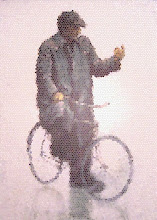

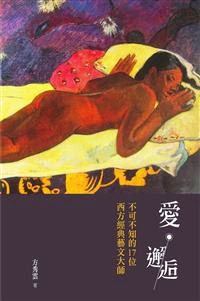
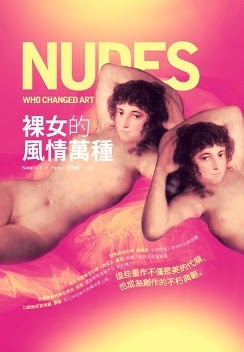
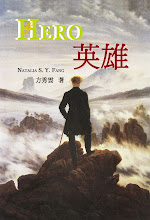


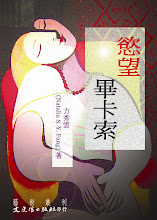

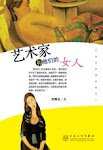
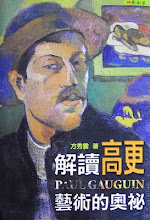
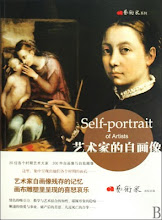
.jpg)
.jpg)
.jpg)
.jpg)
.jpg)